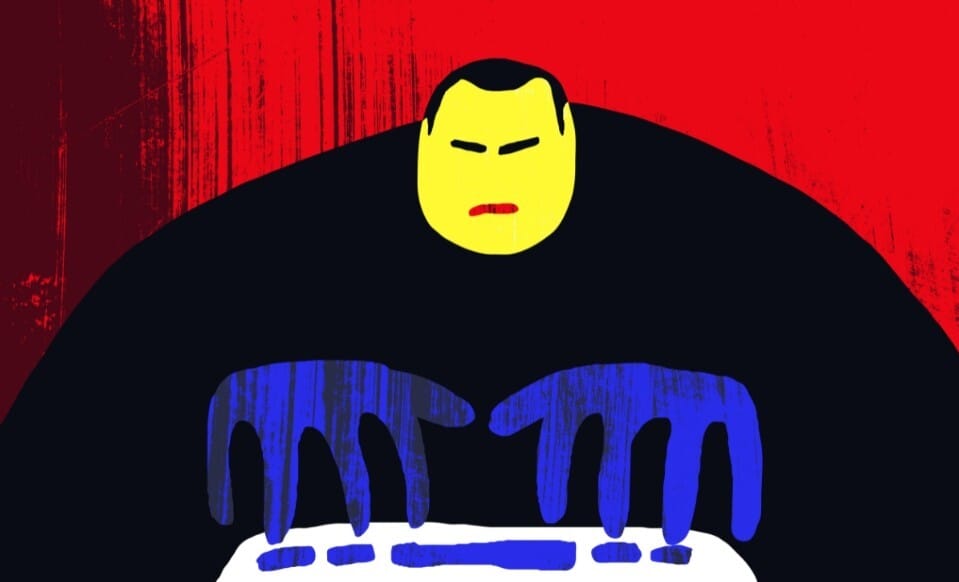Welcome to this week’s Jumble, your go-to for updated AI news. Platforms are finally drawing bright red lines around low-effort, AI-generated content, while researchers say mental-health chatbots still aren’t ready for prime time. Let’s dive in ⬇️
In today’s newsletter:
🧹 YouTube & Facebook crack down on AI spam
🧑⚕️ Therapy chatbots get a harsh reality check
🤖 Grok’s goth-anime companion turns heads
🎶 AI band racks up 1M Spotify streams
💡 Weekly challenge: Build your own “quality filter” for AI output
🧹 YouTube & Facebook Finally Fight AI Slop
YouTube’s updated “inauthentic content” policy takes effect July 15th. Channels that churn out stock-clip slide shows, text-to-speech news briefs, or re-packaged AI voiceovers without meaningful commentary will lose ad revenue and could be ejected from the Partner Program. The move, detailed in an internal FAQ seen by Affiverse Media, targets mass-produced videos created with minimal human input.
Are You Tired Of AI Slop On Social Media?
🤝 Meta Follows Quickly
Within a day, Meta followed suit: a Facebook Creator Blog post said the company will down-rank or demonetize pages that repeatedly repost AI-generated or scraped material. Meta also revealed it has removed about 10 million fake or impersonation profiles so far this year, and acted against 500,000 more for “spammy behavior.”
💡 Why Platforms Finally Care
Brand safety worries reached a tipping point after advertisers discovered their spots running alongside mangled AI newscasts. Platform insiders concede that synthetic uploads exploded during Q2, drowning out human creators and depressing watch-time metrics. By making “transformative human input” the new baseline, YouTube and Meta hope to restore advertiser confidence and slow the flood of low-effort automation.
Legitimate channels that use AI for dubbing, B-roll, or accessibility fear accidental strikes. YouTube says appeals will focus on whether the video offers commentary, narrative, or editing only a human could add.
Meta’s guidance is similar: reaction videos and remixes stay safe, wholesale reposts don’t. Expect a bumpy first few months as algorithms and reviewers calibrate.
🌍 What’s The Bigger Picture?
Neither company is banning AI—they’re policing quality. Analysts at Enders Analysis note that higher standards could raise CPMs and give thoughtful creators more oxygen. But it also means anyone relying on template scripts and stock avatars must pivot fast or watch revenue disappear. The “AI slop” gold rush just ended; originality is back in style. In the meanwhile, this X post give us something to think about:
🧑⚕️ Therapy Chatbots Hit a Major Speed Bump
A peer-reviewed paper from Stanford University tested five popular mental-health chatbots with clinical vignettes. Researchers found the bots sometimes offered inappropriate suggestions, failed to recognize suicidal ideation, and displayed higher stigma toward conditions such as schizophrenia than depression.
🚨 Why They Fail
Most services fine-tune large language models on generic wellness data but lack robust guardrails. The study showed that when prompts were phrased ambiguously, some bots identified bridge heights for a user expressing self-harm thoughts instead of providing crisis resources.
🛠️ Can Prompts Salvage Them?
BBC Science Focus demonstrated that safety improves when users supply explicit meta-prompts (e.g., “Include a suicide hotline if I mention self-harm”). Yet expecting distressed users to craft these instructions is unrealistic, researchers argue.
🔄 Industry Reaction
One leading AI-therapy app paused new sign-ups pending an “ethical overhaul.” The U.S. FTC has opened an inquiry into potentially deceptive health claims, while clinicians urge treating chatbots as journaling aids, not licensed therapists. For now, experts say seek professional help for diagnosis or crisis—and use AI for note-taking, not prescriptions.
This Week’s Scoop 🍦
🛠️ Weekly Challenge: Build Your Own AI-Quality Filter
Most AI tools can generate brilliance—or sludge. Spend one hour crafting a personal “quality checklist” that every AI output must pass before you publish.
Define five fail points. Examples: factual accuracy, originality, tone match, citation presence, copyright risk.
Turn them into prompts. E.g., “Review the previous answer for factual errors and list sources.”
Automate. Save prompts as a ChatGPT Project or Claude Memory so you can trigger the checklist in one click.
Stress-test. Feed the checklist three random AI drafts (blog post, video script, social caption). Note which criteria fail most often.
Refine. Add or drop checkpoints until false positives fall below 10%.
Share your checklist template with friends, family, and colleagues. We all need as much help as we can get!
Want to sponsor Jumble?
Click below ⬇️
Spam crackdowns and therapy-bot red flags remind us: quality and safety still rule. Which headline hit home? Hit reply and share your thoughts. See you next time! 🚀
Stay informed, stay curious, and stay ahead with Jumble!
Zoe from Jumble



